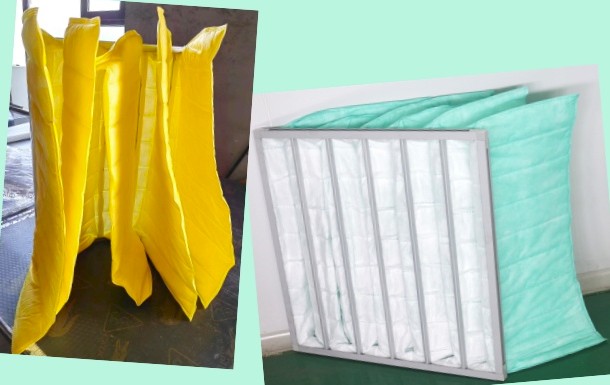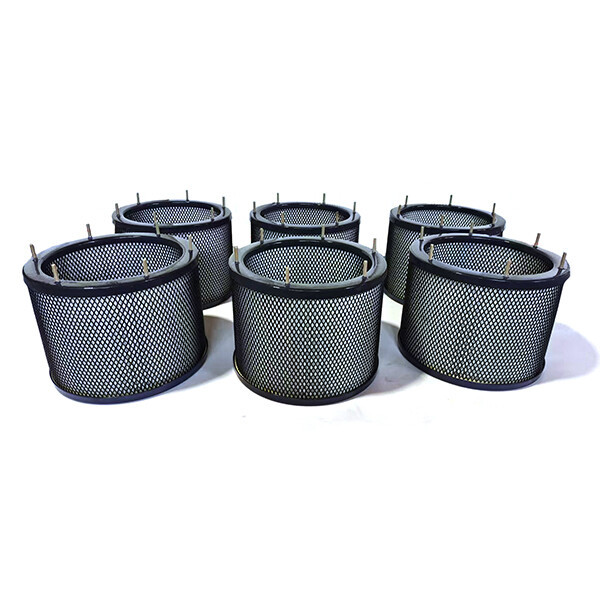NEWS & BLOGS

The treatment of dust particles, SO2, and NXO in industrial flue gas has led to the application of dust removal filter materials, and the "ultra-low emission" transformation of various industries has promoted the rapid development of dust removal filter materials. Since the birth of the first non-woven filter material in my country in the 1980s, all walks of life have really begun to pay attention to atmospheric emissions. Dust removal filter materials and dust removal technologies have flourished, and the update and iteration of various industrial dust removal filter materials and dust removal equipment have gradually moved towards digitalization, automation, dataization, and intelligence.
As the national air control requirements become more and more stringent, and emission requirements enter the "single digit" era, the basic performance and functions of filter materials have quietly changed. In the traditional filter materials and dust removal equipment structure, a variety of new materials and new application technologies have evolved. This article will give a comprehensive introduction to the current development status of industrial dust removal filter materials, and discuss the new development directions that have already begun and will appear in the future.

Basic Principle of Dust Removal
The main principle of dust removal is to achieve gas-solid separation or gas-liquid separation through a series of physical/chemical effects. Some dust collectors with special functions can also achieve gas-gas separation or gas-solid-liquid three-phase separation. Dust removal filter material is the core component of dust removal work and the key material to ensure the good operation of the dust collector. The performance of the filter material directly determines the dust removal effect.
(1) Physical interception: The gaps between the filter cloth fibers or the gaps between the dust adsorbed on the filter cloth surface will separate the dust larger than the gap diameter.
(2) Inertial collision: When the dust-laden gas passes through the filter cloth, the larger dust particles collide with the fibers due to inertia and are captured.
(3) Adhesion: When fine dust particles flow around with the airflow if the radius of the dust is greater than the distance from the center of the dust to the edge of the filter cloth, the dust is adhered to the filter cloth and captured.
(4) Diffusion: For extremely fine dust particles, Brownian motion increases the chance of contact with the filter cloth, so that the dust is captured.
(5) Electrostatic effect: Dust particles collide with each other to generate static electricity. If the dust and the filter cloth have opposite charges, the dust is adsorbed on the filter cloth, achieving dust capture and improving dust removal efficiency.
(6) Gravity effect: When the airflow speed suddenly decreases or the airflow changes direction, the larger dust particles are separated from the gas under the action of gravity and inertia, and the dust removal effect is achieved through sedimentation.
Basic performance of dust removal
The effect of dust collector operation is mainly judged by comparing the basic performance indicators of dust removal and filtration.
(1) Filtration performance: large dust holding capacity and a certain permanent dust holding capacity can be retained after cleaning to maintain a high filtration efficiency: good air permeability, small pressure loss, and smooth airflow.
(2) Physical durability: good wrinkle resistance, wear resistance, heat resistance and corrosion resistance, high mechanical strength, and the stability of filter materials in harsh environments. Stable size, not easy to deform.
(3) Cleaning characteristics: low hygroscopicity, good peeling properties, easy to clean, ensuring that dust does not easily adhere to the surface of the filter material, easy clean.
(4) Economic and practical: long service life, reduced replacement frequency, Low cost, reasonable price, and economic benefits.

Industrial dust removal types and application trends
There are many types of industrial dust removal, which can be mainly divided into two categories: dry and wet.
Dry dust collectors: such as bag dust collectors, cartridge dust collectors, desulfurization dust collectors, cyclone dust collectors, electrostatic dust collectors, etc., mainly separate particles from gases through filtration, inertia, and electrostatic dust removal, and are suitable for different scenarios and needs.
Wet dust collectors: such as wet cyclone dust collectors, wet electrostatic dust collectors, wet scrubbers, etc., use water film or liquid spray to mix particles in the gas with water to achieve dust removal purposes and are often used to deal with high-temperature, high humidity, viscous, and easily adherent dust.
In addition, there are some special types of dust collectors, such as activated carbon adsorption dust collectors, which are mainly used to treat organic pollutants. At present, the more common dust removal technology basically adopts bag dust removal or electric/bag composite dust removal. Bag dust removal mainly uses woven or non-woven methods to make fibers into felt filter materials, and finally forms dust filter bags through bag making process. The dust filter bags are installed in the bag dust collector. Through the filtering effect of the filter bag, the dust particles in the flue gas are removed to achieve the dust removal effect.

Application trend: Recycling and reuse of filter materials
With the increasing awareness of environmental protection and the demand for resource recycling, the recycling and reuse of filter materials has become increasingly important. The recycling and reuse of filter materials is an important part of environmental protection and resource recycling, which not only helps to reduce environmental pollution but also saves resources and reduces production costs. There are various ways to recycle and reuse dust removal filter materials.
1. Primary cycle of cleaning and utilization: dust removal and cleaning of high-resistance filter bags. For high-resistance failure caused by condensation, oil sticking, and sticking, etc. of filter bags, cleaning can be implemented and reused after confirming that other performance is acceptable.
2. Secondary cycle of material reuse: reuse of old filter bag filter cloth. For filter bag failure caused by local mechanical damage or structural damage, cleaning, cutting, sewing, and reuse can be implemented after confirmation to achieve secondary recycling.
3. Primary recycling of fiber extraction: reuse of old filter bag fibers. The filter bag performance has deteriorated and cannot be reused, but the fiber material has no abnormalities or damage. It can be reused as reused fiber by cleaning and breaking, thus achieving primary recycling.
4. Secondary recycling of material extraction: high-quality recycling of resin. The fiber performance has deteriorated and cannot be used directly, or the composite fiber filter material cannot be reused directly. It can be purified by chemical method and then remade to form new recycled materials to achieve secondary recycling.
5. Energy utilization of thermal energy recovery: incineration to recover energy. If the filter bag material structure is destroyed the material molecules have lost their utilization value and cannot be reused or the filter bags are of low value and not worth recycling, they can be incinerated to recover heat energy.
What Can We Do For You
